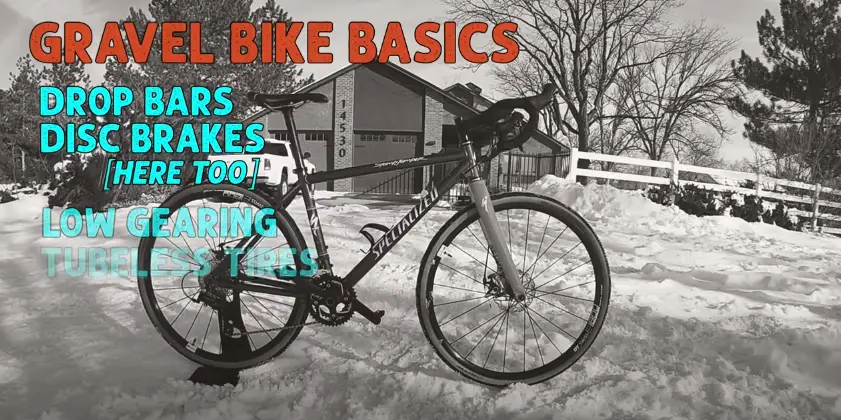Suppose you’re an enthusiastic mountain biker who wishes to experiment with new terrain. In that case, learning how to convert MTB to gravel bike can open up a world of possibilities for long-distance rides on mixed surfaces. Gravel biking is the perfect compromise between off-road thrills and road smarts, providing an appealing alternative for cyclists who don’t wish to own a second bike.
With a few simple upgrades, you can turn your mountain bike into a gravel bike that can tackle everything from trails to smooth asphalt. Below is a step-by-step process of how to do that and upgrade your cycling experience.
1. Knowing the Differences Between MTB and Gravel Bikes
Before undergoing the conversion process, one should be aware of the greatest differences between MTBs and gravel bikes, especially in geometry, tires, and components. Frames of MTBs are usually built to endure abrasive and rough surfaces and are designed with more suspension to serve as shock absorbers.
Gravel bikes, on the other hand, are designed for long-distance comfort, efficiency, and speed on mixed surfaces. They also have a more laid-back geometry for stability on rough roads. Gravel bikes also have drop handlebars for aerodynamics and comfort, whereas MTB tires are wider, more knobby, and designed for traction on dirt paths.
2. Step-by-Step Guide to Converting Your MTB to Gravel Bike
2.1. Evaluating the Frame Compatiblity
The initial step in converting your MTB is to make sure that the frame is compatible with the components required to go gravel riding. While many MTBs have the necessary frame strength, you’ll need to check the rear triangle for adequate tire clearance. Gravel bikes typically use wider tires, and your MTB frame must allow for these.
Additionally, check the dropout design to see if it supports the change to a more gravel-specific setup, including wider hubs. Ensure your frame can also support the new geometry required to make a gravel bike more stable and comfortable on longer rides.
2.2. Converting the Tires to Gravel-Specific
Possibly the most obvious difference between mountain bikes and gravel bikes is tires—gravel bikes require wider, more general tires that will perform well on mixed terrain. Compared to MTB tire knobby, aggressive tread, gravel tires feature a smoother, semi-slick tread pattern that is more appropriate for varying surfaces from smooth asphalt to dirt roads.
You should search for tires of 35mm to 45mm in width, depending on your frame clearance. Wider tires will carry you in comfort and traction when you ride over gravel, mud, or hard-pack trails.
2.3. Replacing the Handlebars
Replacing the handlebars of your MTB with a drop-bar one is a great way to enhance aerodynamics and comfort for long rides on gravel roads. Drop bars have multiple hand positions, which is ideal for long distances, and help you distribute your weight more evenly, reducing fatigue.
While MTBs typically have flat bars, gravel bikes come with drop bars to allow you to change your riding position. You can also fit wider handlebars for enhanced control and comfort in bumpy terrain. Ensure the handlebar is compatible with your bike stem so it does not create issues on installation.
2.4. Drivetrain Upgrade for Effeciency
A gravel bike is enhanced by a drivetrain that is compatible with a number of gears, enabling effortless switching between gravel, dirt, and road. MTBs have a wide-range drivetrain, but it could be worth upgrading to a gravel set if your current drivetrain is too heavy or inefficient for day-long riding.
Gravel bikes are often used with a 1x drivetrain, which benefits from a more straightforward setup with fewer gears but better performance on gravel and mixed terrain. Alternatively, you can utilize the gear ratios to experience a smoother transition across different terrains.
2.5. Braking the Brakes
While mountain bikes enjoy excellent disc brakes, it is crucial that your MTB braking system is well-tuned to accommodate gravel riding with reliability as the top priority in any conditions. Hydraulic disc brakes on most gravel road bikes offer more stopping power and feel than mechanical disc brakes.
Upgrade your MTB to hydraulic brakes if it currently has mechanical brakes to offer enhanced performance on steep gravel roads. Also, have your brakes compatible with your new wheel and tire width because gravel configurations require different rotor sizes for optimal braking performance.
3. What are the main advantages of converting an MTB to a Gravel Bike?
Converting your MTB to a gravel bike has several advantages, such as better performance on long-distance rides, more versatility, and cost-saving compared to purchasing a new gravel bike. With the proper modifications, your MTB will be able to handle all kinds of terrain, from smooth roads to rough dirt roads.
A gravel bike converted can be comfortable and fast for longer distances, making it an excellent choice for those who want to explore varied surfaces without having to buy a new bike. This conversion allows you the flexibility of both off-road trails and highway riding without sacrificing performance.
4. Mistakes to Avoid During the Conversion Process
There are some common mistakes to avoid when converting your MTB, in order to ensure you do not end up sacrificing the bike’s performance or safety. For a start, not checking frame compatibility with components, such as tire width or drivetrain, will cause issues when building or on the road.
A second mistake is having the wrong tires too narrow a tire won’t give enough traction on gravel roads. Double check that your handlebar upgrade is also completed correctly, as poorly installed low-quality drop bars can lead to incorrect riding position or discomfort.
Finally, don’t forget to test your bike thoroughly before hitting the road to ensure all components are functioning properly.
5. Testing Your Converted Gravel Bike
After completing your conversion, it’s time to test your newly transformed gravel bike to make sure all components work seamlessly together for an optimal ride. Begin using the bicycle on a brief excursion on pavement and gravel to experience its handling, braking, and shifting. Take note of the comfort of your ride and adjust the handlebars or saddle height as needed.
Push the bicycle to its limits in different terrain and test its responsiveness on different surfaces, tires, drivetrain, and brakes all working well under a variety of conditions. Double-check to ensure all bolts and parts are tightened to avoid breakdown on longer trips.
6. Maintenance Tips for Your Gravel Bike
After converting your MTB, ongoing maintenance is important to keep it running smoothly on gravel roads and other mixed terrain.
- Begin by keeping your tires well inflated, since under-inflated tires decrease efficiency and traction.
- Keep your bike clean, particularly after dirt or gravel rides, so that dirt does not accumulate in the drivetrain. Regularly lube the chain for easy shifting and to minimize wear.
- Monitor brake rotors and pads, as gravel riding can accelerate wear due to dust and debris.
- Lastly, check your wheels and spokes for trueness and stability for long rides.
FAQ’s
1. Can any MTB be converted to a gravel bike?
Most mountain bikes can be converted to gravel bikes, although compatibility will depend on the frame size, tire clearance, and dropout type. It’s essential to check whether your bike will accept gravel-specific tires and a drop-bar configuration.
2. Do I need to change wheels when converting my MTB to a gravel bike?
It depends on your MTB wheel size and tire clearance. Many MTBs come with 29-inch wheels, which are perfect for gravel riding, but may need to switch to a wider rim and tires for the best gravel performance.
3. How do I choose the best gravel tires for my MTB?
When selecting gravel tires, go for those that are wider (35mm to 45mm), with a semi-slick or knobby tread to give traction on varied terrain. Check your frame tire clearance prior to purchasing.
4. Will my MTB’s current brakes work for gravel riding?
Yes, you can use your existing disc brakes, but make sure that they will be compatible with the new wheel size and tires. The change to hydraulic disc brakes can improve performance, especially on rough gravel or hilly roads.
5. Will my MTB be as fast as a gravel bike after conversion?
While converting your MTB to a gravel bike makes it more capable on gravel, it may not be as quick as a dedicated gravel bike due to component and geo differences. However, it’s a great option for a do-it-all bike without purchasing a new bike.
6. How much does it cost to convert an MTB to a gravel bike?
It varies based on which parts you wish to upgrade, such as tires, handlebars, and drivetrain. Generally, you should plan on spending $200 to $500 for a total conversion, but this will be based on the level of quality of parts that you choose.
Conclusion
Converting your MTB to a gravel bike is an enjoyable project that can unlock some new riding possibilities, combining mountain bike durability with gravel riding versatility. Not only will you be able to ride more types of terrain, but you’ll also save money by breathing new life into your existing mountain bike.
By doing the right things and adding the right upgrades, you can have a bicycle that will handle everything from dirt trails to smooth pavement with ease. Regardless of whether you are a veteran rider or new to the sport, the conversion can bring your experience to a whole new level.

I am Ryan Ford, a mountain biking enthusiast who loves to explore the outdoors. I also like to go on adventures with friends and anything else that involves being outside. I love my bike because it gets me out of the house and gives me an opportunity to enjoy nature.

